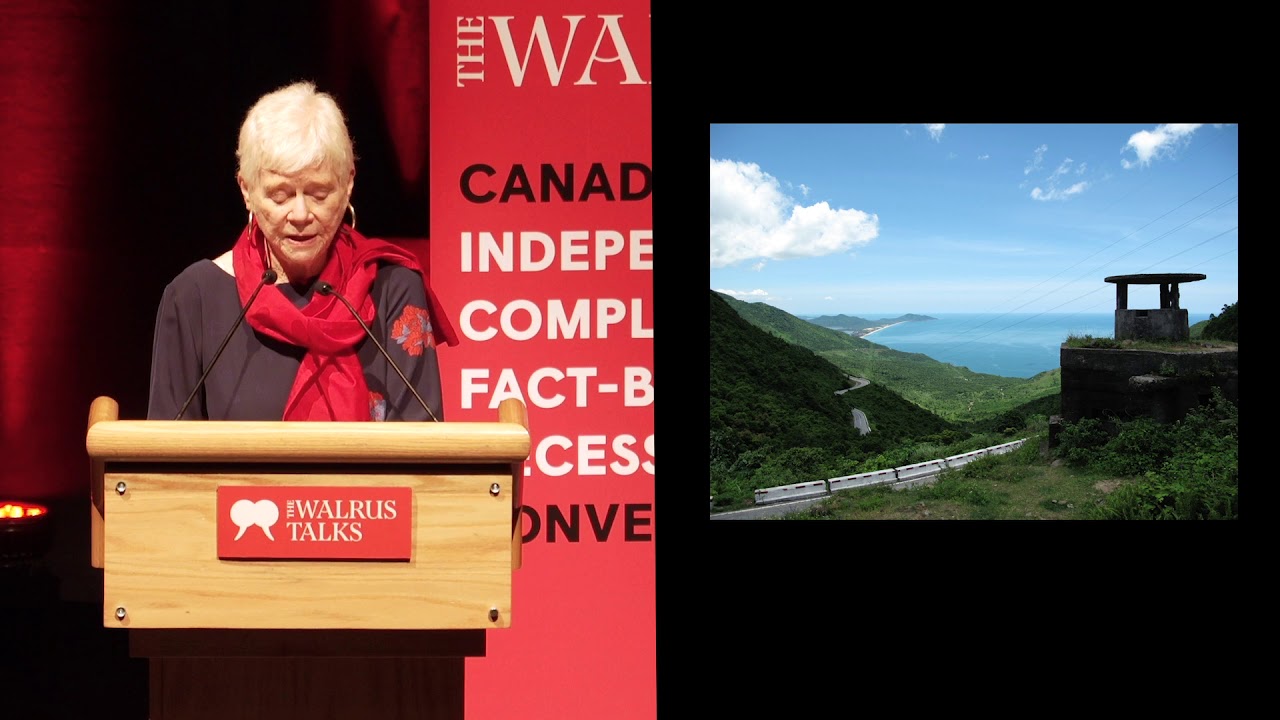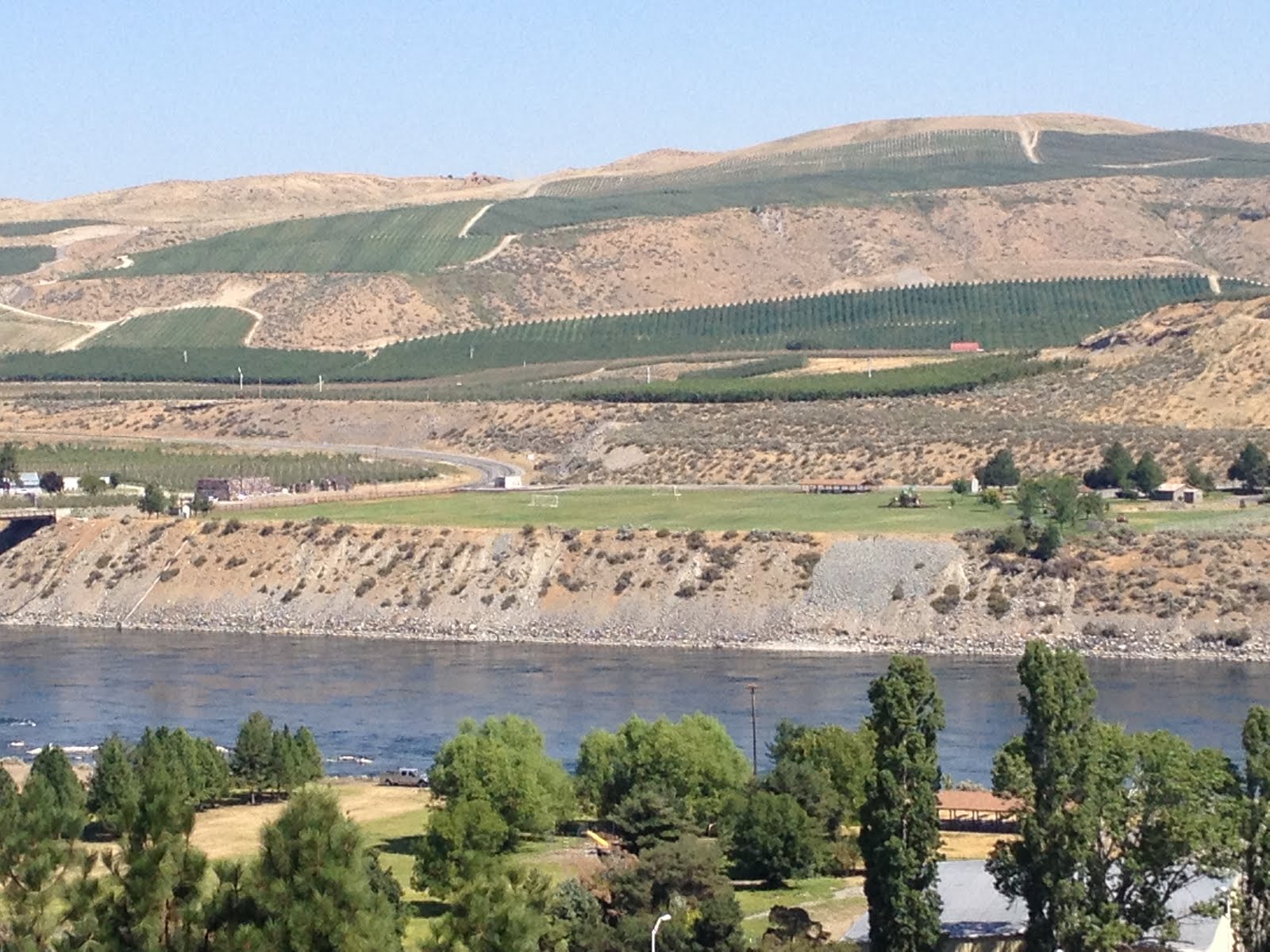Mary Soderstrom's latest novel is
River Music , published in 2015 by Cormorant Books. She is a Montreal-based writer of fiction and
non-fiction with five works of non-fiction, four short
story collections, four other novels and one children’s book to her credit. In addition
over the years she has done a wide variety of reporting on science,
urbanism, politics and writing. She leads book discussion groups in
several Montreal area libraries and has a blog on books and
writing
Not So Solitary a Pleasure: A Blog about Books.
Research for her next non-fiction book
Road through Time: The Story of Humanity on the Move included travel to South America in November 2013. She visited Peru to see the Inka Road, travel the new Estrada do
Pacifico that connects the Atlantic and Pacific through Brazil and Peru,
and visit Curitiba and Brasília, cities which represent two ways to
organize urban life and urban roads.

In early November 2013, Oberon Press brought out a new short story collection
Desire Lines: Stories of Love and Geography. It
marked a return to a form that she loves, but in which she had not
worked for a decade. The project was supported by a generous grant
from the Conseil des arts et lettres du Québec. "This collection is not to be missed." Starred review by Joy Parks in
Quill and Quire.
Her most recent non-fiction book is:
Making Waves: The Continuing Portuguese Adventure. (Véhicule Press, 2010,
ISBN: 978-1-55065-292-5)  How one small nation influenced the world.
How one small nation influenced the world.
The
world is the way it is today because 600 years ago Portugal, a small
nation on the edge of Europe, sent its sailors off in search of
spices, souls and slaves. In
Making Waves: The Portuguese Adventure
Mary Soderstrom takes us to places touched by the Portuguese— from
India to Brazil, from Newfoundland to San Diego—telling a tale of
adventure and triumph, occasionally mixed with a measure of sadness.
Portugal’s influence resonates in the 21st century far beyond the 11
million people who speak Portuguese in the mother country, or the
other 220 million who speak the language around the world.
The
Portuguese—taught the rest of Europe, including Christopher
Columbus, how to ride the winds of the high seas; reached the riches
of the East decades before their rivals the Spanish; spread their
language and culture around the world by making love, not war; traded
in slaves but in 1761 were the first Europeans to outlaw slavery at
home; pioneered city planning—the rebuilding of Lisbon after the
Great Earthquake of 1755 was a visionary rethinking of a city not
equaled until Haussmann redesigned Paris a century later; invented
standardized building methods using pre-cut wood 75 years before the
first balloon frame building in Chicago; and showed how to throw out a
dictatorship peacefully and change society profoundly in the
Carnation Revolution of 1974.
Also available:
The Walkable City: From Haussmann's Boulevards to Jane Jacobs' Streets and Beyond, Véhicule Press, 2008
ISBN 978-1-55065-243-7

"Mary Soderstrom's
The Walkable City
addresses one of the most important environmental, economic, social,
public health and foreign policy issues of our day that is also the
most unexpected and simplest; building walkable urban places. Using an
approach I personally enjoy, taking a long historical perspective
from pre-history through the various ages of city building, Ms.
Soderstrom demonstrates that we as a civilization know how to build
walkable cities. We just have to speed up our efforts." Christopher Leinberger, The Brookings Institution
Mary's novel
The Violets of Usambara was published in spring 2008 by Cormorant Books
ISBN 978-1-55065-243-7

“Mary Soderstrom's
The Violets of Usambara is
a moving novel that explores the possibility of redemption in a
morally complex world. Cutting between Canada and tension-filled
Burundi, it has echoes of Graham Greene both in setting and tone, but
it is above all Soderstrom's intelligent investigation of power and its
absence and love over a lifetime of a marriage.”Antanas Sileika
Click
here for more about her African trip taken to research this novel.
Publications:
Non-fiction
 Green City: People, Nature and Urban Places
Green City: People, Nature and Urban Places
How
people have brought nature into cities throughout history, told
through visits to 11 cities, from Babylon to São Paulo. One of The
Globe and Mail's Best Books of 2007.
Véhicule Press. ISBN 1-55065-207-9
 Recreating Eden: A Natural History of Botanical Gardens.
Recreating Eden: A Natural History of Botanical Gardens. The founders of the first botanical gardens
in
the sixteenth century attempted to create a Garden of Eden that
contained a complete collection of all things created by God. Although
in other cultures it has different names, humans have yearned for this
mythic place of pece and joy from which they were expelled. This book
explores how these gardens have evolved over the last 400 years by
guiding us through nine of the world's most interesting ones. Véhicule
Press 2001 ISBN1-550065-151-X
"The Ecology of Botanical Gardens" in
The Encylopedia of Ecology, Elsevier, 2008
Other fiction:
 After Surfing Ocean Beach,
After Surfing Ocean Beach,
a novel set in San Diego, published by Dundurn Press under its Simon
and Pierre imprint. Read about After Surfing Ocean Beach and Mary
Soderstrom in the cover feature of the Montreal Review of Books´ Spring
2004
issue
 The Truth Is
The Truth Is A collection of 14 short stories set in Montreal and told from the point of view of women, Oberon Press, November 2001
"when
it comes to craft, and particularly structure, these are stories that
any writer would benefit from studying. Because the truth is, there
just aren't enough stories out there that are this good.
 The Words on the Wall; Robert Nelson and the Rebellion of 1837
The Words on the Wall; Robert Nelson and the Rebellion of 1837
A non- traditional biography of an English leader in the Rebellion in
Lower Canada. November 1998. Oberon Press . French version: Robert
Nelson: le médecin rebelle. February 1999 Éditions l´Hexagone Translated
by Michel Saint-Germain.
 Finding the Enemy
Finding the Enemy
1997, Oberon Press. A collection of short stories extending in time
from the day the first Atomic Bomb was tested until the War in the
Persian Gulf, and taking place in Los Alamos, Montreal, Bucharest and
San Diego. Finalist for the 1997 QSPELL Hugh McLennan Prize for fiction.
French version, L´Autre ennemi , November 2000 from Éditions
l´Hexagone. Translated by Michel Saint-Germain/ Finalist for the 2002
Quebec Writers´ Federation prize for Fiction.
 Endangered Species
Endangered Species
It's 1990, there's a by-election and a failed attempt at Canadian
unity, and Claire Tremblay is faced with her past. Oberon Press 1995
 Maybe Tomorrow I´ll Have a Good Time
Maybe Tomorrow I´ll Have a Good Time, Human Sciences Press, 1981, New York. A picture story about a little girl starting day care.
 The Descent of Andrew McPherson
The Descent of Andrew McPherson,
McGraw Hill-Ryerson Press, l976, Toronto) Family saga novel set in
Montreal and Idaho. Short listed for the Books in Canada First Novel
prize
French translations:



Short Fiction:
Short stories in such magazines as
Maisonneuve, OUI, Chatelaine, Fiddlehead, Exile, Grain, and
Galaxy.
Member of juries for the Canada Council for the Arts (most recently in 2016 for the Governor General's Prize for Non-Fiction,) the Conseil des arts et lettres du Québec, and other literary competitions.
Five times a semi-finalist in the CBC Annual Literary Competition:
1988, 1989 and 1998 (short story), and 1990 and 1991 (personal essay).
Journalism:
Frequent
contributor and book reviewer for Quill and Quire, Top Five, Canada
Business Press awards 2002, for "The Grant Game," published in Quill.
Contributor in the past to
Hour Magazine, Books in Canada, Canadian Author, Plant and Garden, and
The McGill News.
Freelance journalism over a number of years in the and
New York Times, Omni, Montreal Star, The Gazette, The Globe and Mail, Montreal Scene, and the San Francisco Chronicle.
Other Literary Activities:
Quebec Writers' Federation Community Award 2008
Three times Boursière, of grants from the Conseil des arts et lettres du Québec. The first in 2001 to
support work on a novel called
The Violets of Usambara, in 2011 to support work on the short story collection,
Desire Lines, and again in 2020 for a travel grant to work on a non-ficition book,
Against the Seas: Saving Civilizations from Rising Oceans.
Featured participant, Festival littéraire international de Montréal, Blue Metropolis, many times
Appearances
at Book Expo Canada,; the Salon du livre de l´Outouais,; Salon du
livre de Québec; Salon du livre de Montréal, and Reading as part of the
Harbourfront Reading Series, Toronto.
Book
discussion series leader, Atwater, Kirkland,
Pierrefonds and Dollard des Ormeaux libraries and la Bibliothèque Robert-Bourassa, Montreal,
Available for readings and illustrated lectures on all topics covered by her books.
Personal Information
Born
November 8, 1942 in Walla Walla, Washington, USA. Childhood there and
in San Diego. Resident of Montreal since September, 1968, Dual
citizen, U.S and Canada
Bilingual, English-French
Education
Master
of Journalism, University of California at Berkeley, 1969; Bachelor of
Arts, Major in English Literature, University of California at
Berkeley, 1964
Check out Mary Soderstrom's Blog,
Recreating Eden






















